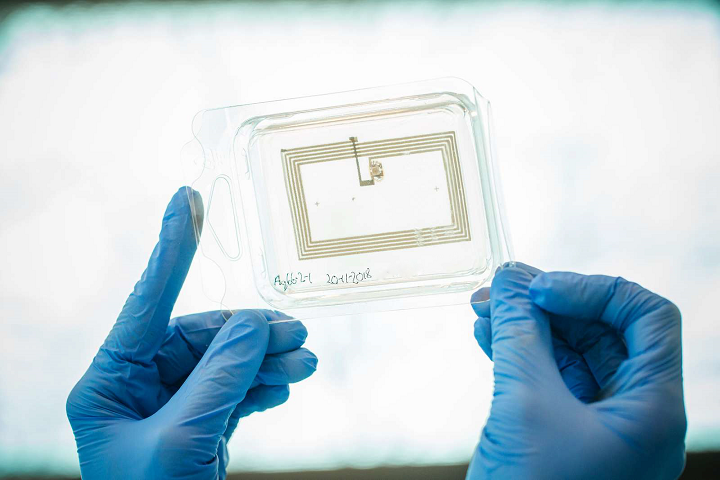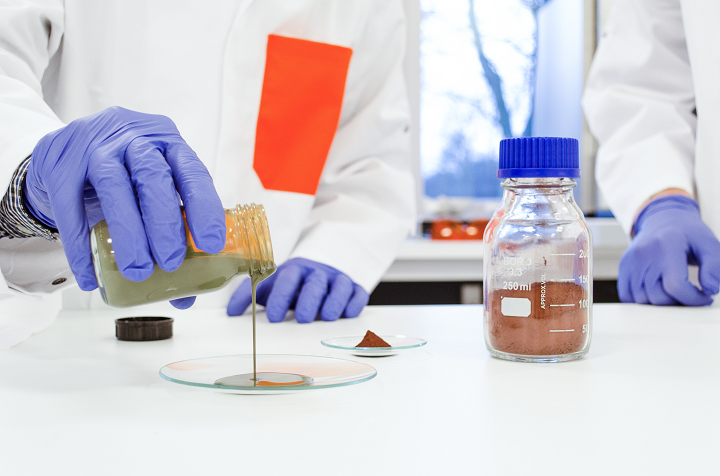More and more, we are using special industrial 3D printers, with inkjet and aerosol jet technology, to embed conductive components within our intelligent products in what we call 3D printed electronics. Items like ECG electrodes and contactless payment cards use these embedded components to perform wireless activities and readings, like measuring the frequency of a person’s heart beats and paying for something at the store. The technology makes it possible to 3D print conductive circuits on nearly any surface imaginable, and the market for it is estimated at $32 billion outside Europe alone. Now, the continent is working to play catch-up.
In a move to increase Europe’s competitiveness in this field, and further prepare for Industry 4.0, the European Union’s Horizon 2020 has granted €10.6 million in funding to a new European innovation hub, led by the Danish Technological Institute (DTI), that will focus on 3D printed electronics.
“Printed electronics opens up a whole world of new opportunities, as complex constructions can be embedded just like using 3D printing, at prices able to compete with mass-produced goods,” said Zachary James Davis, DTI’s Project Coordinator for the hub. “Quite simply because electronics can be produced from CAD drawings and printed on flexible materials, as already used in architecture and 3D print.”
DTI researchers have been working with 3D printed electronics since 2016. This work, coupled with its efforts in encouraging the adoption of 3D printing, is what makes the university the perfect leader for the new hub as it works to help Europe’s manufacturing industry gain a strong position. Together with 16 RTOs and businesses, such as Fraunhofer, Eindhoven University of Technology, RISE, and Axia, DTI will develop an open innovation test bed, or LEE-BED, which will function as the hub and focus on 3D printed electronics.
Enterprises that apply to join LEE-BED will have their businesses cases evaluated first. If they are selected to participate, they will receive access to RTOs which most closely match their personal requirements. In addition, the chosen enterprises will also have access to expertise and equipment from designated RTOs in order to support their own 3D printing electronics development efforts, with no financial risk, all the way from the prototyping phase up to pilot production and full-scale manufacturing.
Davis explained, “All the partners in LEE BED will provide their various skills and facilities within printed electronics to enterprises that want to integrate and embed electronics into their products.
“Enterprises will be able to prove the viability of new technologies without major investment and financial risk during the all-important initial phase. We have already started working with jewellery giant Swarovski, looking into the idea of intelligent light in their crystals that can be integrated with clothing and home interiors.”
In addition to Swarovski, LEE-BED also has three other industrial cases with European companies: Acciona, Grafietic, and Maier.
LEE-BED is made up of three phases:
- Technological & economic modeling, including lifecycle analysis, patent research and safety/legislation audit
- The pilot project using current, and upgraded, pilot lines for nanomaterials, nano-enabled formulations, and 2D/3D printing of components
- Knowledge transfer, to include evaluation of intellectual property rights (IPR) and patents, investment possibilities, and standards/safety screening
The purpose of LEE-BED is to spread awareness about 3D printed electronics, and develop and implement them across Europe in order to “break down barriers” for the technology to be used. The goal is to keep the European manufacturing industry in the EU, as opposed to outsourcing high-tech projects elsewhere.
Discuss this and other 3D printing topics at 3DPrintBoard.com or share your thoughts in the Facebook comments below.
[Images provided by Danish Technological Institute]Subscribe to Our Email Newsletter
Stay up-to-date on all the latest news from the 3D printing industry and receive information and offers from third party vendors.
Print Services
Upload your 3D Models and get them printed quickly and efficiently.
You May Also Like
Consolidation in AM: How 2025 Is Shaping the Industry’s New Normal
The first half of 2025 has been marked by a clear shift in the additive manufacturing (AM) industry. Companies are no longer just focused on developing new tech by themselves....
Etsy Design Rule Change Reduces Selection of 3D Printed Goods
Online marketplace Etsy has implemented a rule change requiring all 3D printed goods on the site to be original designs. The update to the site’s Creativity Standards states, ¨Items produced using...
U.S. Congress Calls Out 3D Printing in Proposal for Commercial Reserve Manufacturing Network
Last week, the U.S. House of Representatives’ Appropriations Committee moved the FY 2026 defense bill forward to the House floor. Included in the legislation is a $131 million proposal for...
Transforming From Tourist to Native: Duro CEO Michael Corr Explains Why the Company Rebuilt its PLM Software on AI
In these early innings of the AI boom, many market analysts have expressed concern that AI spend has gotten too far ahead of the technology’s proven ability to deliver significant...



































